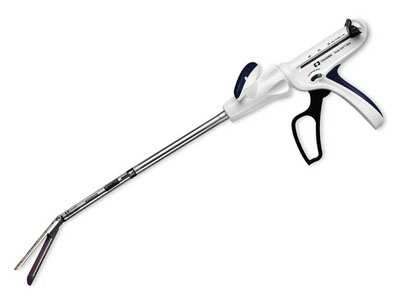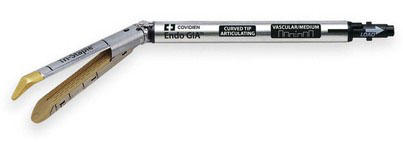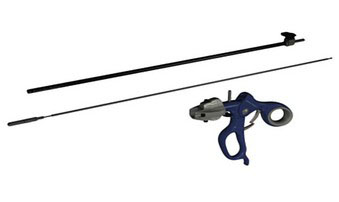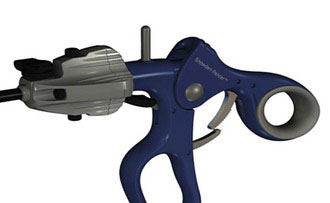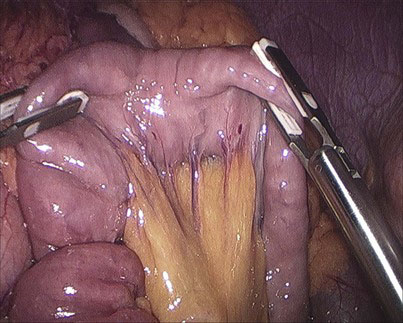Chapter 43 New Minimally Invasive Surgery Technologies
As can be seen from the preceding chapters, there has been a tremendous advancement in the scope of laparoscopic surgery during the past two decades. For a new technology to become successful, it needs to improve on the currently available technology—whether it is safer, smaller, cheaper, more user-friendly, or in some other way better. Indeed, appropriate coverage for all new technologies in minimally invasive surgery would be far beyond the scope of this chapter. The intent is simply to mention the highlights of new technologies. This advancement in technology has not been possible without the assistance of the medical industry to produce better, more technologically advanced devices to perform more complicated surgeries using smaller and smaller incisions. All these technologic advancements need to be accomplished without compromising patient safety, yet also at a reasonable cost, so that the payers will continue to reimburse for the surgical procedures. This chapter introduces some of the newer technologies in the field of laparoscopic surgery in general, as provided by certain manufacturers. Surgical robotics are well covered in Chapter 42. It should be noted that similar technologies have been produced by different companies, and this chapter seeks to demonstrate an example of each.
Minimally invasive surgery staplers
Surgical staplers are used in a variety of laparoscopic and thoracoscopic surgical procedures. Characteristics of an effective stapler include the ability to manage tissue variability, the ability to staple thick tissues effectively, the ability to staple with staggered compression, the ability to optimize hemostasis and burst pressure strength, and the ability to improve tissue retention during manipulation and transaction. The stapler must be ergonomically easy to grasp as well as being usable by a variety of hand sizes and strengths. An example of such a stapler that satisfies all of these characteristics is the recently released Endo GIA Ultra Universal Stapler (Covidien, Norwalk, Conn.) (Fig. 43-1). In addition, this stapler can be used as a grasper alone before firing the staples. Other companies produce similar products.
There are also a variety of staple heights available for each type of reload for the surgical stapler. Usually, the stapler reloads are color coded according to the staple height, to allow for better recognition in the operating room. The larger staple height is better for thicker tissue, whereas the smaller height is more applicable to thinner tissue, or even vascular tissue. It is important to match staple height to the tissue to be stapled. Too tall of a staple may result in an inadequate seal as well as a potential for hemorrhage, whereas too short of a staple may not penetrate the tissue fully, potentially resulting in an anastomotic leak. Covidien has recently improved on the staple reloads with the Tri-Staple Technology (Fig. 43-2). This technology varies the staple height in a given reload to facilitate use over a broader range of tissue thickness and also includes a stronger fixed anvil for easier maneuverability. The cartridge face is stepped, as opposed to being flat in previous versions of the reload. This encourages lateral diffusion of tissue fluids during clamping and firing, which decreases the force required to compress the tissue. A stronger knife blade assists with cutting of thicker tissues, and larger anvil buckets are used to ensure good staple formation. The Extra Thick (black) reloads with the Tri-Staple Technology allow the reload to staple tissue up to 3-mm thick using 5-mm staples. This is especially useful for challenging cases such as bariatric revisions as well as pulmonary lobectomies in radiated tissue. The Endo GIA Curved Tip Reloads with Tri-Staple Technology include a gold-colored curved tip at the distal end of the reload, providing enhanced visualization of the anvil tip (Fig. 43-3). This curved tip can be used for blunt dissection and tissue manipulation before firing the stapler. A radiopaque flexible introducer can be mounted onto the curved tip, assisting with placement of the stapler onto a target structure.
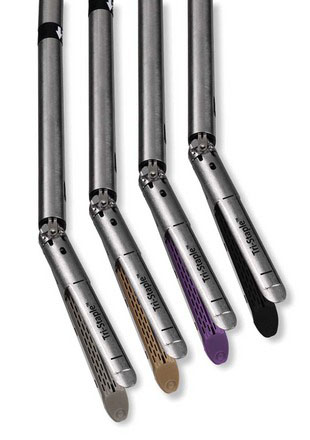
FIGURE 43-2 Endo GIA Tri-Staple Reloads (Covidien, Norwalk, Conn.) with a variety of staple heights.
Laparoscopic instruments
The technology behind minimally invasive surgical instruments continues to evolve. Although several companies produce various types of laparoscopic instruments, Snowden-Pencer (San Diego, Calif.) has developed instruments that are able to be disassembled, thus allowing visual inspection of surfaces during the cleaning process (Fig. 43-4). In addition, hand fatigue has been reduced with a newly stylized handle to more evenly distribute pressure, as well as thumb actuation ridges for easier operation and cushioned inserts to reduce thumb pressure. There is also an integrated ratchet mechanism that allows the same instrument to be used either with or without the ratchet, thus greatly improving versatility (Fig. 43-5).
Laparoscopy inherently prevents surgeons from using their hands directly on the tissue. Several types of metal have been used to grasp tissue, but these can cause traumatic injury to the tissue if grasped too strongly or dropping of the tissue if grasped too loosely. Secure atraumatic graspers are an essential part of any advanced laparoscopic procedure. An example is the atraumatic minimally invasive surgery grasper, in which the jaws have a disposable membrane made of a hydrophobic porous proprietary mesh that allows a gentle yet secure grip on the tissue, thus avoiding tissue trauma (Trigonon Inc., Milwaukee, Wis.) (Fig. 43-6).
< div class='tao-gold-member'>
Stay updated, free articles. Join our Telegram channel

Full access? Get Clinical Tree


